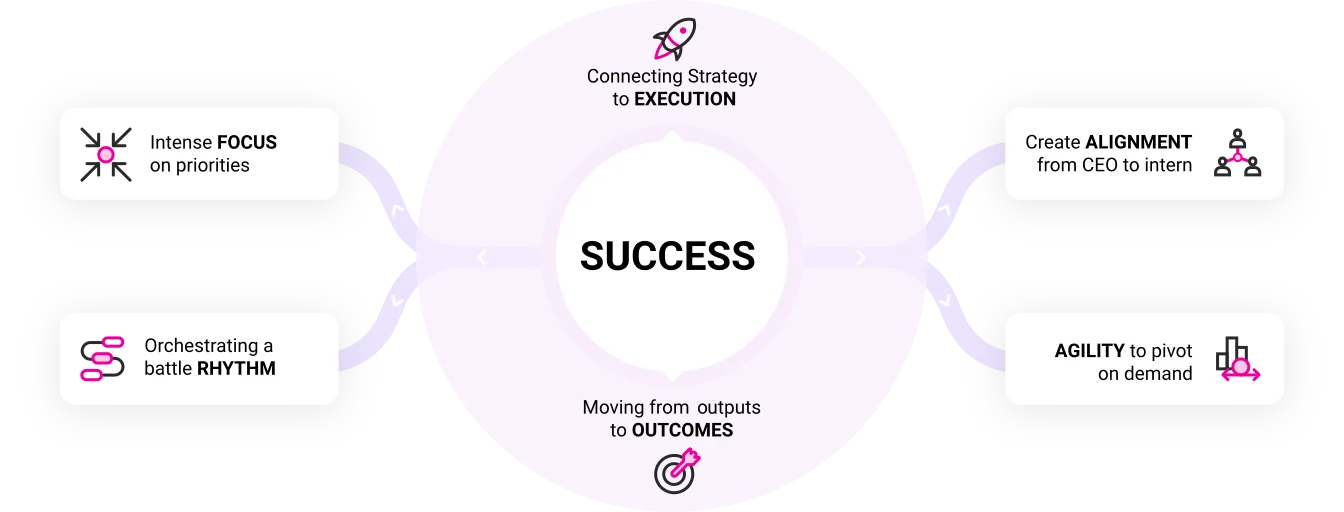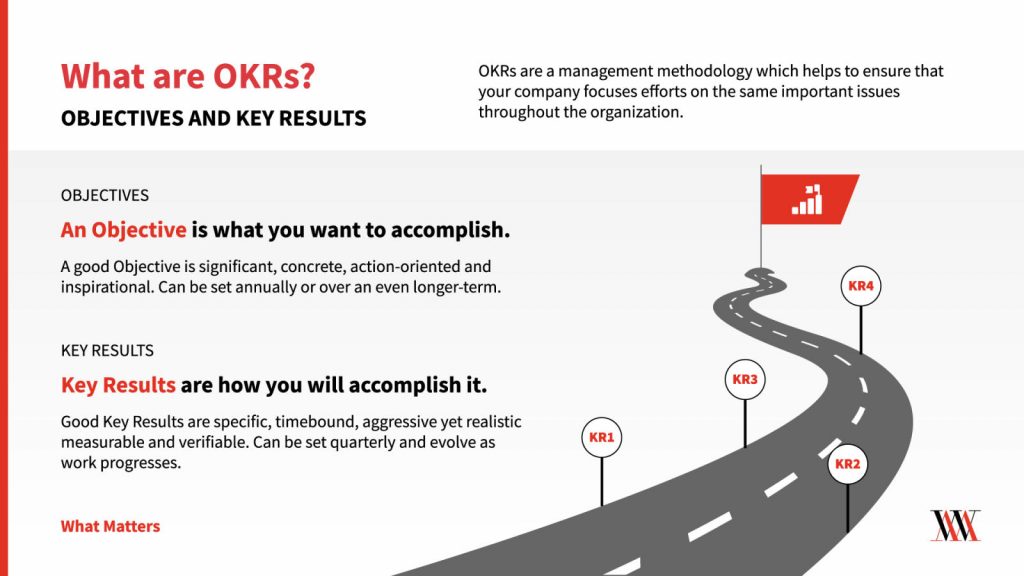Discover the secret behind skyrocketing success rates of insurance companies with this game-changing OKRs strategy – a must-read!

Table of Contents
- Understanding OKRs in the Insurance Industry
- Defining Ambitious Yet Attainable Objectives
- Establishing Key Results
- Cascading OKRs throughout the Organization
- Using Technology to Track and Manage OKRs
- Encouraging a Culture of Continuous Learning and Adaptation
- Reviewing and Adjusting OKRs
- Conclusion
Effective goal-setting is vital for any organization’s success, and insurance companies are no exception. In recent years, many insurance companies have adopted Objectives and Key Results (OKRs) to drive performance and ensure alignment with strategic objectives. This blog post will delve into the step-by-step process of applying OKRs in insurance companies and how they can unlock success.
Understanding OKRs in the Insurance Industry
To apply OKRs successfully in insurance companies, it is crucial to deeply understand what OKRs are and how they can benefit the insurance industry. Objectives and Key Results (OKRs) is a goal-setting methodology popularized by companies like Google and Intel. OKRs provide a framework for setting and achieving ambitious yet attainable objectives, helping organizations focus on key outcomes that contribute to their success.
In the insurance industry, OKRs can be a powerful tool for driving growth, improving operational efficiency, enhancing customer experience, managing risk, and fostering innovation. Insurance companies that embrace OKRs can align their entire organization towards common goals and create a culture of accountability, transparency, and continuous improvement.
Defining Ambitious Yet Attainable Objectives
The first step in applying OKRs in insurance companies is to define the objectives. It is important to assess the competitive landscape, understand the business goals, and create specific and measurable objectives that align with the company’s mission and vision.
For example, an insurance company may set an objective to increase customer retention over the next quarter. Another objective could be to streamline claims processing time. Each objective must be challenging enough to inspire teams while remaining attainable within the given timeframe.
Unlock your insurance company’s full potential with OKRs. Learn how to set ambitious goals and achieve extraordinary results. #OKRs #InsuranceSuccess
Establishing Key Results
Insurance companies need to establish key results to measure progress towards the objectives. Key results are quantifiable metrics that define success for each objective. They help track and evaluate the progress made towards achieving the desired outcomes.
To increase customer retention, key results could include metrics such as reducing customer churn rate by 10%, increasing customer satisfaction scores by 15%, and achieving a Net Promoter Score (NPS) of 80 or above. Clear and measurable key results ensure teams stay focused and can objectively assess their performance.
Cascading OKRs throughout the Organization
Implementing OKRs effectively requires cascading them throughout the entire organization. Communicating the objectives and key results to all levels and teams within the insurance company is essential. This ensures everyone understands how their work connects to the broader strategic objectives.
Regular check-ins and progress evaluations are crucial in cascading OKRs. It is recommended that teams have weekly or bi-weekly meetings to discuss their progress, challenges, and how they can support each other to achieve their objectives. This creates a sense of collaboration and accountability that drives the success of OKRs at all levels.
Using Technology to Track and Manage OKRs
The use of technology is a game-changer when it comes to effectively tracking and managing OKRs in insurance companies. There are software tools available that can automate OKR tracking, allow real-time progress monitoring, and provide data analytics and reporting for better insights.

Many OKR software solutions offer features like visual dashboards, goal alignment tracking, individual and team progress updates, and performance analytics. These tools simplify the tracking process of OKRs and enable transparency and collaboration across teams and departments.
Encouraging a Culture of Continuous Learning and Adaptation
OKRs are not set in stone; they are meant to be reviewed, adjusted, and learned from. Insurance companies need to foster a culture of continuous learning and adaptation. Employees should embrace a growth mindset, be open to feedback, identify areas for improvement, and adapt their strategies as needed.
Encouraging collaboration and knowledge sharing plays a crucial role as well. When teams and departments share best practices and learn from each other’s successes and failures, it accelerates the progress towards achieving OKRs. Insurance companies can continuously improve their performance and outcomes by creating a culture that values learning and adaptation.
Reviewing and Adjusting OKRs
Regularly reviewing and assessing OKRs are essential to ensure they remain relevant and aligned with changing circumstances. Insurance companies should conduct periodic reviews to analyze progress towards the objectives and key results.

During these reviews, it is important to identify areas where teams excel and celebrate their achievements. Equally, attention should be given to identifying bottlenecks or areas where teams fall short. Based on feedback and insights from these assessments, insurance companies should adjust their OKRs to ensure they remain ambitious yet achievable within the given time frame.
Skyrocket Your Insurance Company’s Success with OKRs
Conclusion
Implementing OKRs in insurance companies can be incredibly beneficial. By following the step-by-step process outlined above, insurance companies can align their entire organization towards common goals, drive performance, foster innovation, and ensure a culture of continuous improvement. With OKRs, insurance companies can unlock their potential and achieve long-term success in a rapidly evolving industry.